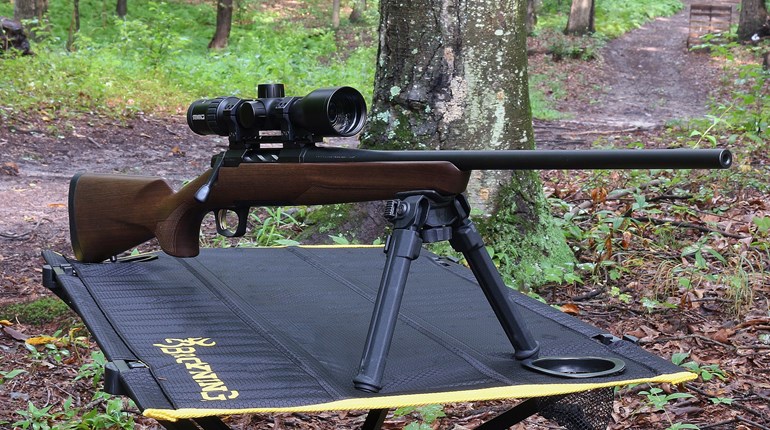
The U.S. Supreme Court announced in late April that it will hear VanDerStok v. Garland, a case that challenges the Bureau of Alcohol, Tobacco, Firearms and Explosives’ (ATF) so-called “ghost gun” rule that is written to change the legal definition of what makes a gun a gun.
The ATF rule, initially issued in 2022, treats some firearms parts and part kits as if they are fully functional firearms. It requires that these parts, such as a frame or receiver, be treated like they are completed guns. As such, manufacturers and sellers of such parts would need to be licensed, and, according to law, the parts would need serial numbers. It also requires purchasers of these reclassified parts to be subject to background checks before acquiring them, just like citizens do when buying a complete firearm from a licensed dealer.
“The rule is being marketed through the credulous anti-gun media as a means of regulating ‘ghost guns,’ or unmarked firearms manufactured by those other than federal firearm licensees (FFLs). The latter have long been required to stamp firearms with specified markings and to keep detailed records of their production and distribution. Even this premise, however, doesn’t make a lot of sense,” reported the NRA Institute for Legislative Action. “‘Ghost guns’ are no more lethal or dangerous than ‘mortal’ guns. They are simply more difficult to trace back to the original maker or owner.”
Judge Reed O’Connor of the U.S. District Court for the Northern District of Texas struck down this rule last year, noting that the rule exceeded the scope of the ATF’s authority. A three-judge panel from the Fifth Circuit Court of Appeals upheld his ruling.
In this Biden administration effort to greatly broaden the definition of what a gun is, the ATF “has been attempting to foist new, far-reaching regulations upon American gun owners,” constitutional attorney Stephen P. Halbrook wrote of the rule for America’s 1st Freedom.
The U.S. Department of Justice appealed this decision to the U.S. Supreme Court, arguing that the Gun Control Act of 1968 permits the rule because it defines a firearm to include “any weapon … which will or is designed to or may readily be converted to expel a projectile by the action of an explosive,” and the “frame or receiver of any such weapon.”
The U.S. Supreme Court, meanwhile, allowed the regulation to remain in effect as the lawsuit worked its way through the courts. So now, if the high court allows the ATF to greatly expand definitions passed by Congress, an administration would attain the power to rewrite law to suit its political desires.
To put this in context, it is important to note that, from the Founding period to today, American citizens have always been able to make their own guns. This isn’t new and it isn’t illegal.
So, to avoid this historical and contemporary reality, the Biden administration, gun-control groups and the media that supports them are using the phrase “ghost gun” to make this sound new. This loaded term refers to any “unserialized” firearms made by someone other than an FFL. As such, a gun would not have an official serial number the ATF could use to follow the gun back to a licensed manufacturer. But again, a U.S. citizen who is not prohibited from owning a gun has always been able to make their own guns.
While it is true that, with the advancements in 3D-printing technology, it is much easier for enthusiasts to make a gun than ever, a homemade firearm still only becomes potentially illegal if a person makes a gun they are prohibited from owning, if they attempt to sell guns they have made as part of a business without first becoming a licensed dealer or if they break some other law.
Nevertheless, the key issue in this case is that the ATF is attempting to massively expand its authority by reinterpreting the meaning of “firearm.” Firearms are already subject to a wide range of regulations that do not apply to mere gun parts or materials that could, with sufficient effort and know-how, be used to make an operable firearm. Under federal statute, a “firearm” is “any weapon (including a starter gun) which will or is designed to or may readily be converted to expel a projectile by the action of an explosive,” as well as, “the frame or receiver of any such weapon.” The statute does not, however, define “readily … converted” or “frame or receiver.” Doing so is, therefore, according to the U.S. Constitution, a power held by Congress.
This attempted rule expansion by the ATF is an effort by the bureaucracy to overstep Congress’ constitutional authority. If the ATF gets its way, then unfinished blanks or castings could be treated under the law as if they are operable firearms. In practical terms, the rule currently sets it sights on so-called 80% receivers or Polymer-80 type kits, yet the ATF clearly wants the authority to determine when and how the line should be moved even further.
While the theory that it is getting easier for criminals to manufacture guns is a non-frivolous concern, the argument falls apart upon inspection; for example, a prohibited person who possesses an operable “ghost gun” is just as guilty of a crime as they would be if they had a gun made by a licensed manufacturer. There is no “loophole” that protects this conduct from being actionable under the law.
Next, there are many ways that criminals already get around existing laws to illegally obtain and possess firearms. Even the ATF’s data shows that personally made firearms constitute a very small percentage of guns recovered at crime scenes.
Also, while the ATF’s firearms tracing is treated by the mainstream media as if it is immediate and that it can turn up the name of the perpetrator—just as TV dramas have often portrayed—the facts destroy this fantasy. Even the ATF’s data shows that most “crime guns” have been in circulation for years; also, most were stolen or otherwise obtained illegally.
This possible expansion of ATF power would not prevent any crimes, and it is unlikely to solve the crimes the Biden administration claims it would. It is simply a way to further criminalize gun ownership in America.

































